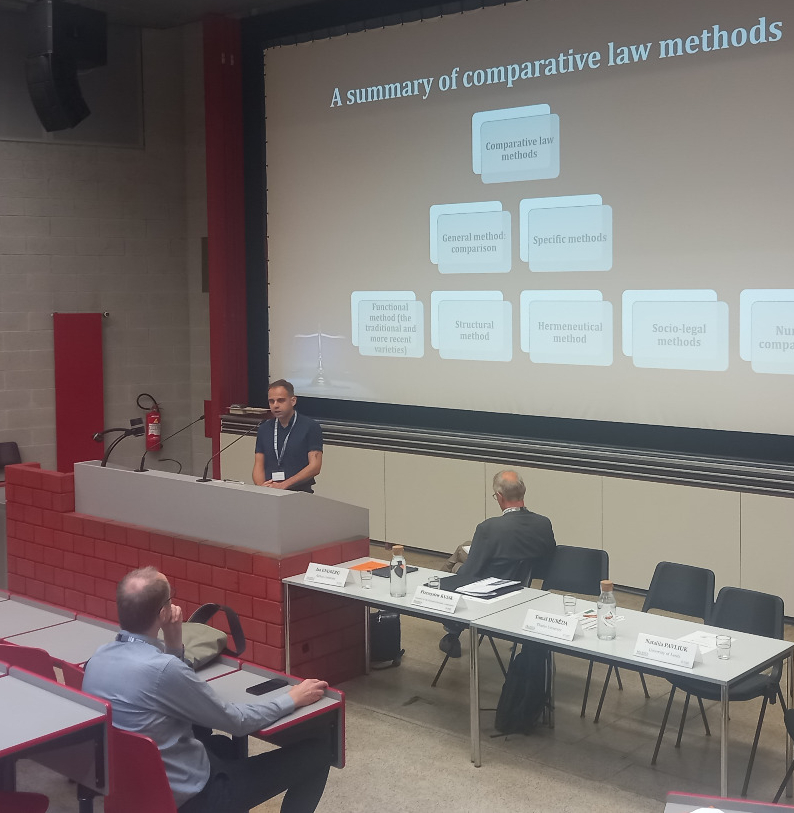COMPARATIVE LAW AND LEGAL TRANSLATION: WHAT DO THEY HAVE IN COMMON, HOW ARE THEY DIFFERENT AND HOW CAN THEY BE USEFUL FOR EACH OTHER?
In the course of preparing my PhD thesis entitled ‘Zastosowanie metod prawnoporównawczych w procesie tłumaczenia na przykładzie polsko-angielskiego przekładu terminologii z zakresu prawa rzeczowego’ (‘The Application of Comparative Law Methods in the Translation Process as Exemplified by the Polish-English Translation of Property Law Terminology’) at Department of International Legal Communication, I conducted research on the usefulness of the application of comparative law methods in legal translation. I am continuing my research after obtaining a doctoral degree based on the above thesis. In addition, I am preparing a second doctoral thesis devoted to legal transplants between common law systems and the Polish legal system. I also deal with selected issues of administrative law and the image of law in the media.
My publications related to translation and comparative law:
- ‘Przeszczepy prawne (legal transplants) z systemów prawnych common law w polskim systemie prawnym. Studium z zakresu prawa porównawczego’, PWN, 2025.
- ‘Zastosowanie metod prawnoporównawczych w procesie tłumaczenia na przykładzie polsko-angielskiego przekładu terminologii z zakresu prawa rzeczowego’, PWN, 2025.
- ‘Legal Communication as a Point of Contact Between Legal Translation and Comparative Law’. Journal of International Legal Communication, 2024, vol. 14, no. 3, pp. 92–109.
- ‘Teoria przeszczepów prawnych jako paradygmat prawa porównawczego. Próba podsumowania w 50. rocznicę ukazania się monografii pt. Legal Transplants: An Approach to Comparative Law Alana Watsona’, Forum Prawnicze, 2024, no. 3(83), pp. 42–65
- ‘Communicating the Methodology of Comparative Law Research in Legal Translator Training: A Gap to be Filled’, [in:] Ana Margarida Simões Gaudêncio, Fernando Vannier dos Santos Borges, Marta Graça (ed.), ‘Legal Science Communication Conference Proceedings: Communicating Legal Research’, Coimbra 2024, pp. 11–26
- ‘Comparative Law in the Eyes of Translation Scholars. Is Legal Translation Really an Exercise of Comparative Law?’, HERMES – Journal of Language and Communication in Business, 2024, No. 64, pp. 111–124
- ‘Legal transplants and legal translation: a case study of the borrowing of the U.S. limited liability partnership into the Polish legal system’, Perspectives, 2024
- ‘The right to the environment? Article 4(1) of the Polish Environmental Protection Law Act from a combined comparative law and Polish-English legal translation perspective’, Comparative Legilinguistics, 2023, no 56, pp. 195–221
- ‘English Translation Equivalents of Selected Polish Partnership Types Revisited from the Perspective of Comparative Law’, Lingua Legis, 2022, no. 30, pp. 7–21
- ‘Louisiana and Quebec Terminology as a Tool in Polish-English Legal Translation’, Studies in Logic, Grammar and Rhetoric, 2018, no. 53 (1), pp. 163-176
Conferences:
- ‘II Legal SciComm Conference: Research and Practices’, Universidade de Coimbra, Coimbra 2024. Paper: ‘Teaching Comparative Law to (Future) Legal Translators: An Outline Syllabus Proposal for a Standalone Comparative Law Course’
- ’19th Conference on Translation, Interpreting, LSPs and Cultural Studies and 4th East European Consortium of Korean Studies (EECKS) and the International Conference on East Asian and Korean Studies’, Poznań, 28.06.2024. Paper: ‘Translatability and Transplantability of Law: Legal Translation and Comparative Law Brought Together Around the Concept of Legal Transplants’
- ‘I Legal SciComm Conference: Communicating Legal Research’, Coimbra, 30.11.2023. Paper: ‘Communicating the Methodology of Comparative Law Research in Legal Translator Training: A Gap to Be Filled’
- ‘Language and Law – Traditions, Trends and Perspectives’, Białystok, 1-2.06.2023. Paper: ‘Comparative Law in the Eyes of Translation Scholars. Is Legal Translation Really an Exercise of Comparative Law?’

